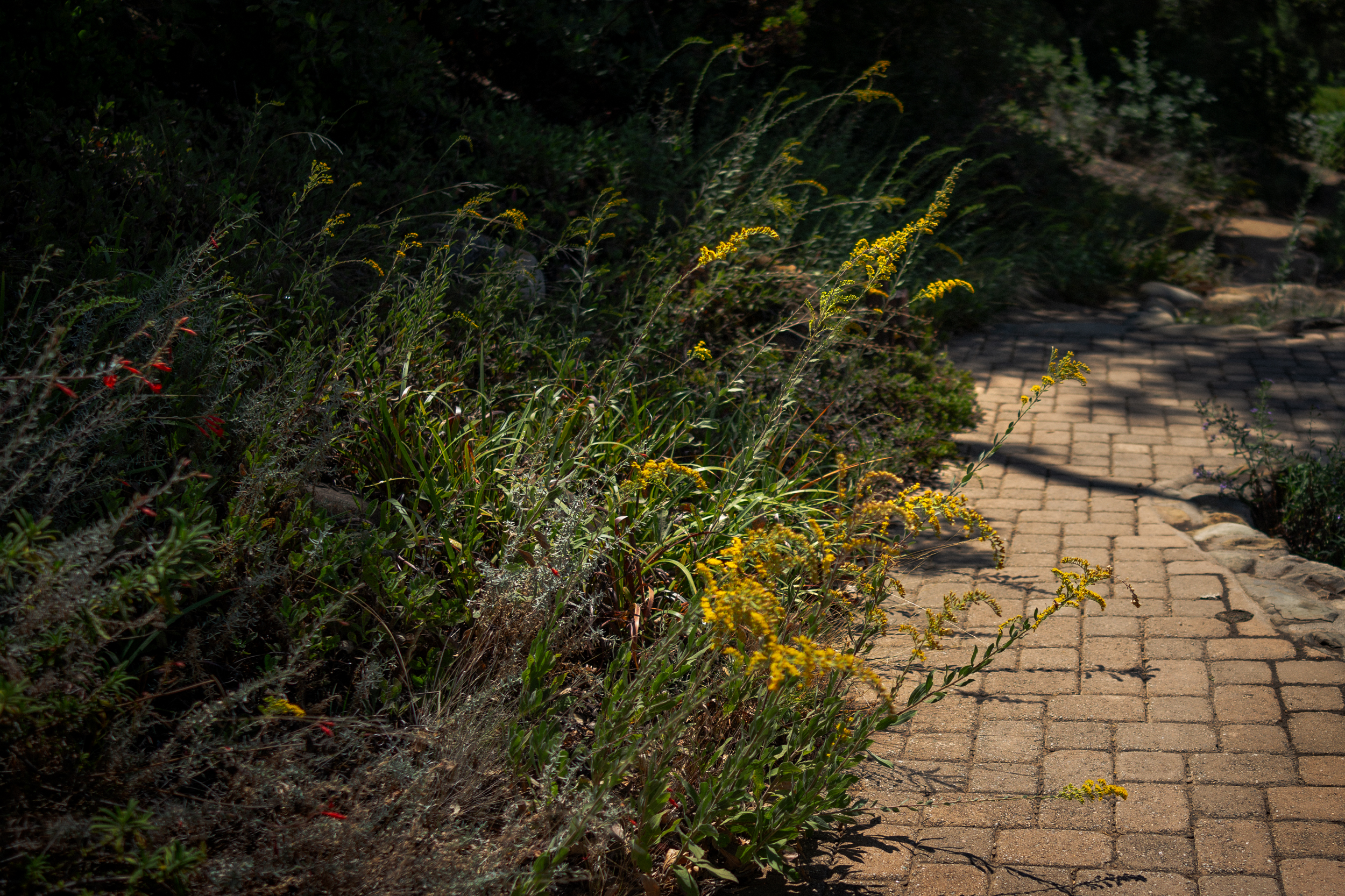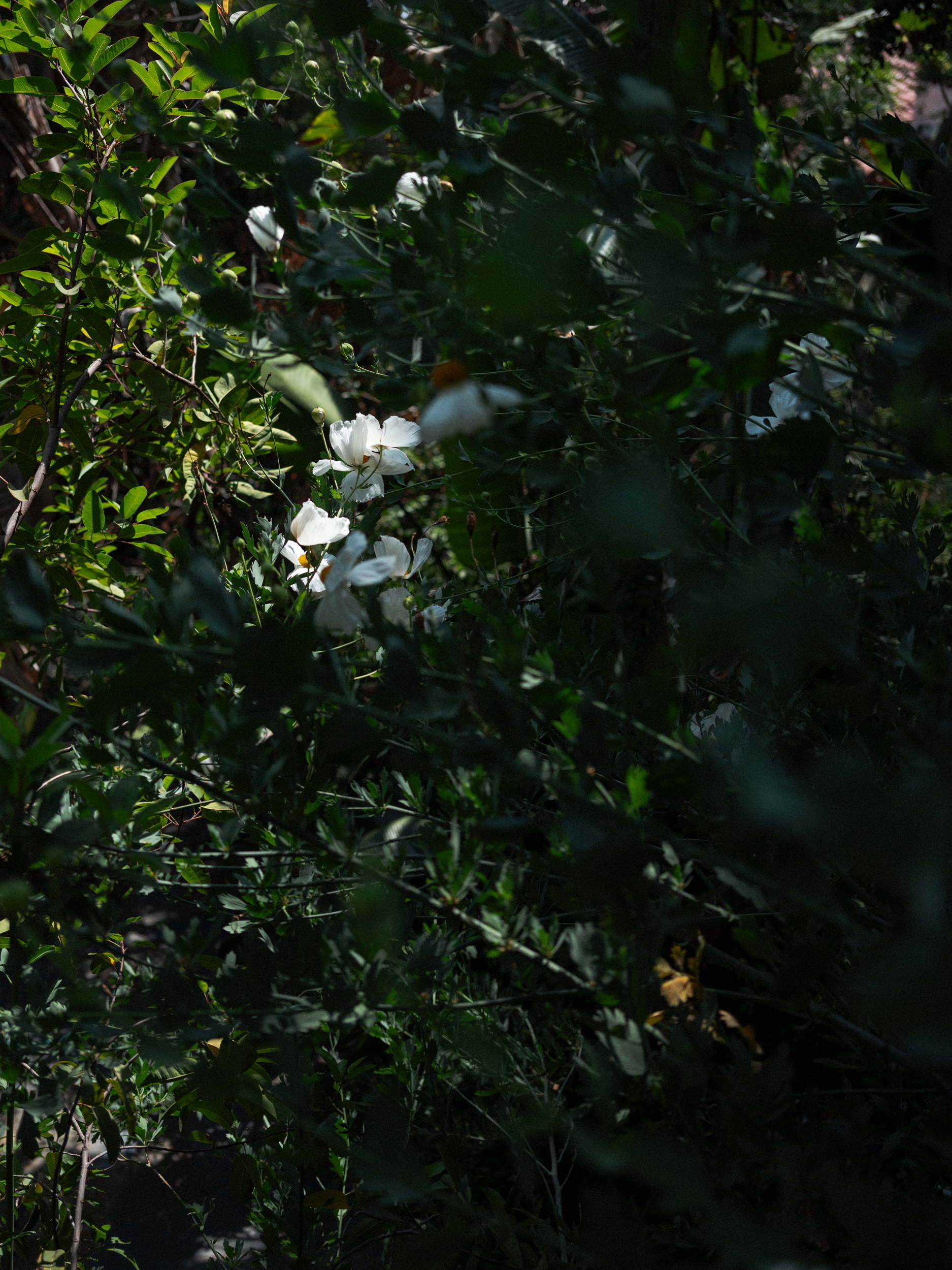Why native plants matter
Los Angeles is not a Desert

It seems that every book, article, and essay on native plants has a section where the author makes a case for why they matter. Many of them are far more knowledgeable and eloquent than what I will say here but, in the spirit of joining in, here is my take on why native plants matter.
They are more economic. This popular argument and one that is most often tied to water usage. 50 percent of our personal water usage goes to landscaping and your local water and power provider is probably offering native/drought tolerant landscaping courses. It is not just water usage in which native plants are more economical.Santa Monica City College ran a decade long study of the cost difference between a native front garden and a traditional front garden. The native garden used less water, less chemicals and required less maintenance.
Because these plants evolved here, the hot dry summers and the variable winter weather patterns are all things the plants live and thrive on.
They smell amazing. Many of our plants do not have scented flowers but scented foliage. When visiting the gardens in this guide, especially in late spring, the deep smell of sage will hit you. In the summer and fall the softer smell of dust, heat and what I always associate with oak trees, comes out, and is best experienced at dusk. It is the smell of enduring and of waiting.
They are beautiful and wild. they connect you to the land and our seasons in Southern California. They represent a beauty and aesthetic more in line with the reality of where we live. One that rejects centuries of erasure and disruption

However, if none of these reasons touch you, perhaps this will. Our ecosystems are dying. Not just here, everywhere, all over the earth. This is due, in part, to climate change, but also because for centuries we have occupied space that was a functioning ecosystem and, instead of allowing that ecosystem to continue, we filled it with exotic plants. This is in part a function of colonialism. It is easier to control indigenous populations when their culture is dismantled and there is no more effective way than destroying their food sources (the most blatant being the campaign to eradicate the American Bison).
Alarming report after alarming report creeps into the news feed, “billions of birds are lost”, “where are all the insects?” “monarchs may go extinct in our lifetime”. Why? Every year
there is less and less habitat for insects to reproduce and then less and less food up the food chain. As Douglas Tallamy says in Bringing Nature Home, “ Like it or not gardeners have become important players in the management of our nation’s wildlife”. A shocking 35 percent of all animal species are herbaceous insects and 90 percent of those are specialists, meaning that they are host specific in the plants that they eat. Therefore, without those plants they cannot live and reproduce. In short, planting plants native to your region means that you are supporting and reconnecting parts of the food chain. Your yard, window sill, pot outside your office, is potentially a functioning member of the ecosystem.


We live in a unique place. We have more native species than the other 47 contiguous states combined, and 40 percent of those are endemic. And with those thousands of native plants come the plethora of insects that feed on them. In fact, Pinnacles National Park has the highest bee diversity in the world, at an astounding 400 species of bees found within the park boundaries. Without native plants those insects die.
And without those insects, the animals that rely on them die as well. There is no untouched and functioning wilderness, we have only fragmented and damaged pockets. To help prevent the collapse of the ecosystem we can reintroduce native plants into our urban and suburban spaces. It is rather beautifully referred to as rewilding.
Why native
plants matter
Los Angeles is not a Desert

It seems that every book, article, and essay on native plants has a section where the author makes a case for why they matter. Many of them are far more knowledgeable and eloquent than what I will say here but, in the spirit of joining in, here is my take on why native plants matter.
They are more economic. This popular argument and one that is most often tied to water usage. 50 percent of our personal water usage goes to landscaping and your local water and power provider is probably offering native/drought tolerant landscaping courses. It is not just water usage in which native plants are more economical.
Santa Monica City College ran a decade long study of the cost difference between a native front garden and a traditional front garden. The native garden used less water, less chemicals and required less maintenance. Because these plants evolved here, the hot dry summers and the variable winter weather patterns are all things the plants live and thrive on.
They smell amazing. Many of our plants do not have scented flowers but scented foliage. When visiting the gardens in this guide, especially in late spring, the deep smell of sage will hit you. In the summer and fall the softer smell of dust, heat and what I always associate with oak trees, comes out, and is best experienced at dusk. It is the smell of enduring and of waiting.

They are beautiful and wild. they connect you to the land and our seasons in Southern California. They represent a beauty and aesthetic more in line with the reality of where we live. One that rejects centuries of erasure and disruption.
However, if none of these reasons touch you, perhaps this will. Our ecosystems are dying. Not just here, everywhere, all over the earth. This is due, in part, to climate change, but also because for centuries we have occupied space that was a functioning ecosystem and, instead of allowing that ecosystem to continue, we filled it with exotic plants. This is in part a function of colonialism. It is easier to control indigenous populations when their culture is dismantled and there is nothing so effective as destroying their food sources (the most blatant being the campaign to eradicate the American Bison).
Alarming report after alarming report creeps into the news feed, “billions of birds are lost”, “where are all the insects?” “monarchs may go extinct in our lifetime”. Why? Every year there is less and less habitat for insects to reproduce and then less and less food up the food chain. As Douglas Tallamy says in Bringing Nature Home, “ Like it or not gardeners have become important players in the management of our nation’s wildlife”. A shocking 35 percent of all animal species are herbaceous insects and 90 percent of those are specialists, meaning that they are host specific in the plants that they eat. Therefore, without those plants they cannot live and reproduce. In short, planting plants native to your region means that you are supporting and reconnecting parts of the food chain. Your yard, window sill, pot outside your office, is potentially a functioning member of the ecosystem.


We live in a unique place. We have more native species than the other 47 contiguous states combined, and 40 percent of those are endemic. And with those thousands of native plants come the plethora of insects that feed on them. In fact, Pinnacles National Park has the highest bee diversity in the world, at an astounding 400 species of bees found within the park boundaries. Without native plants those insects die.
And without those insects, the animals that rely on them die as well. There is no untouched and functioning wilderness, we have only fragmented and damaged pockets. To help prevent the collapse of the ecosystem we can reintroduce native plants into our urban and suburban spaces. It is rather beautifully referred to as rewilding.
Why native plants matter
Los Angeles is not a Desert

It seems that every book, article, and essay on native plants has a section where the author makes a case for why they matter. Many of them are far more knowledgeable and eloquent than what I will say here but, in the spirit of joining in, here is my take on why native plants matter.
They are more economic. This popular argument and one that is most often tied to water usage. 50 percent of our personal water usage goes to landscaping and your local water and power provider is probably offering native/drought tolerant landscaping courses. It is not just water usage in which native plants are more economical. Santa Monica City College ran a decade long study of the cost difference between a native front garden and a traditional front garden. The native garden used less water, less chemicals and required less maintenance. Because these plants evolved here, the hot dry summers and the variable winter weather patterns are all things the plants live and thrive on.
They smell amazing. Many of our plants do not have scented flowers but scented foliage. When visiting the gardens in this guide, especially in late spring, the deep smell of sage will hit you. In the summer and fall the softer smell of dust, heat and what I always associate with oak trees, comes out, and is best experienced at dusk. It is the smell of enduring and of waiting.

However, if none of these reasons touch you, perhaps this will. Our ecosystems are dying. Not just here, everywhere, all over the earth. This is due, in part, to climate change, but also because for centuries we have occupied space that was a functioning ecosystem and, instead of allowing that ecosystem to continue, we filled it with exotic plants. This is in part a function of colonialism. It is easier to control indigenous populations when their culture is dismantled and there is nothing so effective as destroying their food sources (the most blatant being the campaign to eradicate the American Bison).
Alarming report after alarming report creeps into the news feed, “billions of birds are lost”, “where are all the insects?” “monarchs may go extinct in our lifetime”. Why? Every year there is less and less habitat for insects to reproduce and then less and less food up the food chain. As Douglas Tallamy says in Bringing Nature Home, “ Like it or not gardeners have become important players in the management of our nation’s wildlife”. A shocking 35 percent of all animal species are herbaceous insects and 90 percent of those are specialists, meaning that they are host specific in the plants that they eat. Therefore, without those plants they cannot live and reproduce. In short, planting plants native to your region means that you are supporting and reconnecting parts of the food chain. Your yard, window sill, pot outside your office, is potentially a functioning member of the ecosystem.


We live in a unique place. We have more native species than the other 47 contiguous states combined, and 40 percent of those are endemic. And with those thousands of native plants come the plethora of insects that feed on them. In fact, Pinnacles National Park has the highest bee diversity in the world, at an astounding 400 species of bees found within the park boundaries. Without native plants those insects die. And without those insects, the animals that rely on them die as well. There is no untouched and functioning wilderness, we have only fragmented and damaged pockets. To help prevent the collapse of the ecosystem we can reintroduce native plants into our urban and suburban spaces. It is rather beautifully referred to as rewilding.